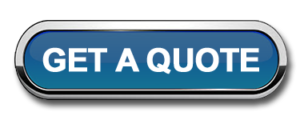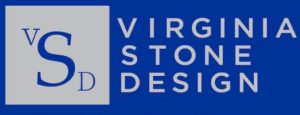Granite is a popular choice for kitchen counters, as well as floor and wall tiles. It’s harder than marble, and its shiny surface and wide range of colors mean it’s an elegant, timeless addition to any home. Granite even has antibacterial and heat resistant properties too. Unfortunately, granite’s good looks and useful properties do come with a premium price tag. If you want to know the best way to keep your granite countertops looking like new, or you’re considering installing granite counters but are daunted by the maintenance, we’ll show you how to keep your work surfaces effortlessly clean.
What is granite?
When you buy a granite countertop, what you’re getting is one of a number of different kinds of rock. True granite is igneous, meaning it’s been formed from lava. What’s in your granite will depend on where it was formed, how long it took to cool, and more. That’s why granite comes in a range of colors and crystal sizes: each granite deposit is as unique as the volcano that created it.
The stone in your granite might contain silica, mica, feldspar, or quartz, along with a variety of other minerals. Or it might not be granite, or even igneous rock, at all. Metamorphic Dolomites are sometimes sold as granite, as are sedimentary breccias and gabbros.
For most people, the chemical makeup of their granite is less important than how it looks, but these variations do have an effect on how you clean your granite countertop. Some types of granite are harder than others, while some stain more easily. Knowing what will stain your particular work surface, and what cleaners you can and can’t use on it, is a good first step to maintaining it properly.
Pro Tip: It’s a myth that dark granite is harder than light granite. Because the minerals in granite are so variable, you can’t tell how strong or porous granite is from the color.
If you haven’t chosen your granite countertop yet, or you know the store your installed granite came from, you can probably get a sample piece in order to stain test. If you can’t get a sample, don’t despair. Our pro tips will guide you through safely cleaning and maintaining your granite.
The lemon and water test for granite countertops

You’ll Need:
- A sample of your granite counter
- Water
- Real lemon juice
- Optional: cooking oil, coffee, sliced fruit e.g. strawberries, blueberries
- Decorator’s tape
- Granite sealant
- Optional: magnifying glass
The lemon and water test is a great, simple way of finding out how your granite countertop will react to different stains and cleaning solutions. You’ll need a sample of your granite from the stone yard or store it came from in order to do this. Don’t experiment on your installed worktop.
Step one: Use decorator’s tape to divide your test granite in half, and seal one half using the brand of sealant you plan to use on your countertop. Check out the guide at the bottom of this article for how to seal granite, or follow the manufacturer’s instructions.
Step two: Once your sealant has set, put your granite on a level surface and add a small amount of water on each side. Next add a small amount of (real) lemon juice beside the water, taking care not to mix them together. For a final test, you can also add cooking oil, or stain sources such as coffee or cut fruit.
Step three: Allow the test granite to sit for at least an hour.
Step four: Wipe the granite clean and inspect it for stains and marks. You should view it at different angles and under different light sources to be sure you see everything. For the most detail, use a magnifying glass to examine the surface for any tiny abrasions or dulling, known as etching.
What you’re looking for:
Where the water (and oil, if used) was placed on the granite, check for darkening of the stone. This indicates that the granite has absorbed the liquid, meaning it’s porous. Whenever you get porous granite countertops wet, you run the risk of them becoming discolored.
The side of the granite that was sealed shouldn’t show any water damage, even if the unsealed side does. If the granite darkens despite being sealed, it’s highly porous and you’ll need a specialized sealant to protect your work surfaces. Maintenance on porous granite is also more intensive, because you’ll have to seal it more frequently and mop up any spills as soon as they happen.
No discoloration where the water was left on the granite means it’s non-porous and will be less likely to stain.
In the area where you put the lemon juice, you might see a change in the shine or surface texture of the granite. Try rubbing your fingers over the spot if you don’t see anything, just to be sure. If your granite looks dull, it has been etched by the acid in the lemon juice.
Some types of granite etch very easily, while others hardly react to even strong acids. If you notice signs of etching, that means your granite worktop will need to be protected from acids such as lemon juice, tomatoes, and red wine.
The primary purpose of sealant is to make granite less absorbent, not to stop chemical damage. Therefore a sealant won’t completely protect your granite from etching, but it should reduce the effect.
Finally, check how susceptible to staining your granite is by reviewing where you placed other test samples. Lighter granites tend to stain more easily, but if your light granite is non-porous then staining will be less of a concern.
How to clean a granite countertop
For most day-to-day cleaning, you don’t need to use a lot of complicated or specialized chemicals on your granite counter. Wipe up spills as soon as you can, and avoid placing any stain sources onto the granite.
Although water can discolor granite and leave marks behind, washing your granite with water is still the best way to clean it. The key is to use only as much water as necessary (don’t flood the stone) and make sure to wipe and dry your granite countertops as soon as you’re done cleaning. Water will only affect your granite if it remains on the surface long enough to soak in.
Always try to use a pH neutral cleaner on granite surfaces to avoid the risk of etching. Gentle dish soap and water is usually enough. Acidic or alkali cleaners can both damage the surface of your granite, making it look dull and dark.

What not to use to clean granite counters
- Lemon juice
- Vinegar
- Citric acid
- Ammonia
- Bleach
- Windex
- Lysol
What you should use to clean granite countertops
- Dish soap (e.g. Ivory, Dawn)
- Castile soap
- Warm water
- Baking soda
- Isopropyl alcohol
| Can I use these to clean my granite countertop? | |
| YES | NO |
| Dish soap (e.g. Ivory, Dawn) | Lemon juice |
| Water | Vinegar |
| Baking soda | Citric acid |
| Isopropyl alcohol | Ammonia |
| Bleach | |
| Windex | |
| Lysol |
To clean granite counters, first wipe away any dust or spills with a clean, damp microfiber cloth. Then use warm water with a small amount of dish soap to wash granite surfaces down. Wring out the cloth and wipe again with clean water to remove any soap residue, as over time it can leave a film behind, especially on dark granite.
Pro Tip: Make sure your dish soap doesn’t contain any citrus extracts or essential oils. Even though they’re only used in very small amounts, they can still damage granite worktops.
Never use any abrasive pad on granite or other natural stone surfaces. Wire cleaners, brushes, and even sponges can scratch and scuff the surface. Instead, microfiber cloths are the best tool to use, as they won’t scratch and they collect dust and dirt, rather than moving it around.
If your granite countertop has a sticky stain, avoid the temptation to scrub it away. Instead, soak stains with water or a pH neutral cleaner and use a soft cloth to wipe them away. If you have a larger stain such as dried food to remove, you can carefully use a plastic scraper to dislodge the residue.
Once your counter is clean, it’s important to dry it completely using a fresh microfiber cloth. If you leave water on granite countertops you risk discoloring the stone.
That’s it! Keeping your granite counters clean really isn’t too difficult, and doesn’t require any expensive, specialist cleaners.
Partial Source: https://prohousekeepers.com/
Virginia Stone Design offers the largest variety of quality natural stone slabs used for residential and commercial projects. If you have any questions about our current inventory, or would like to learn more about our company, visit our HOME PAGE for more information!
Creating a hearth is a great way to protect your floors and add decoration to your home!
ABOUT US
Virginia Stone design specializes in custom fabrication and installation of natural stone.
- Outdoor and indoor Kitchens
- Bathrooms | Wet Bars
- BBQ grills
- Fireplace hearths
- Backsplash
- Sinks
- Countertops
Have a Project in mind? Just send us your design and specifications by e-mail or click below to get a quote and talk with us.







